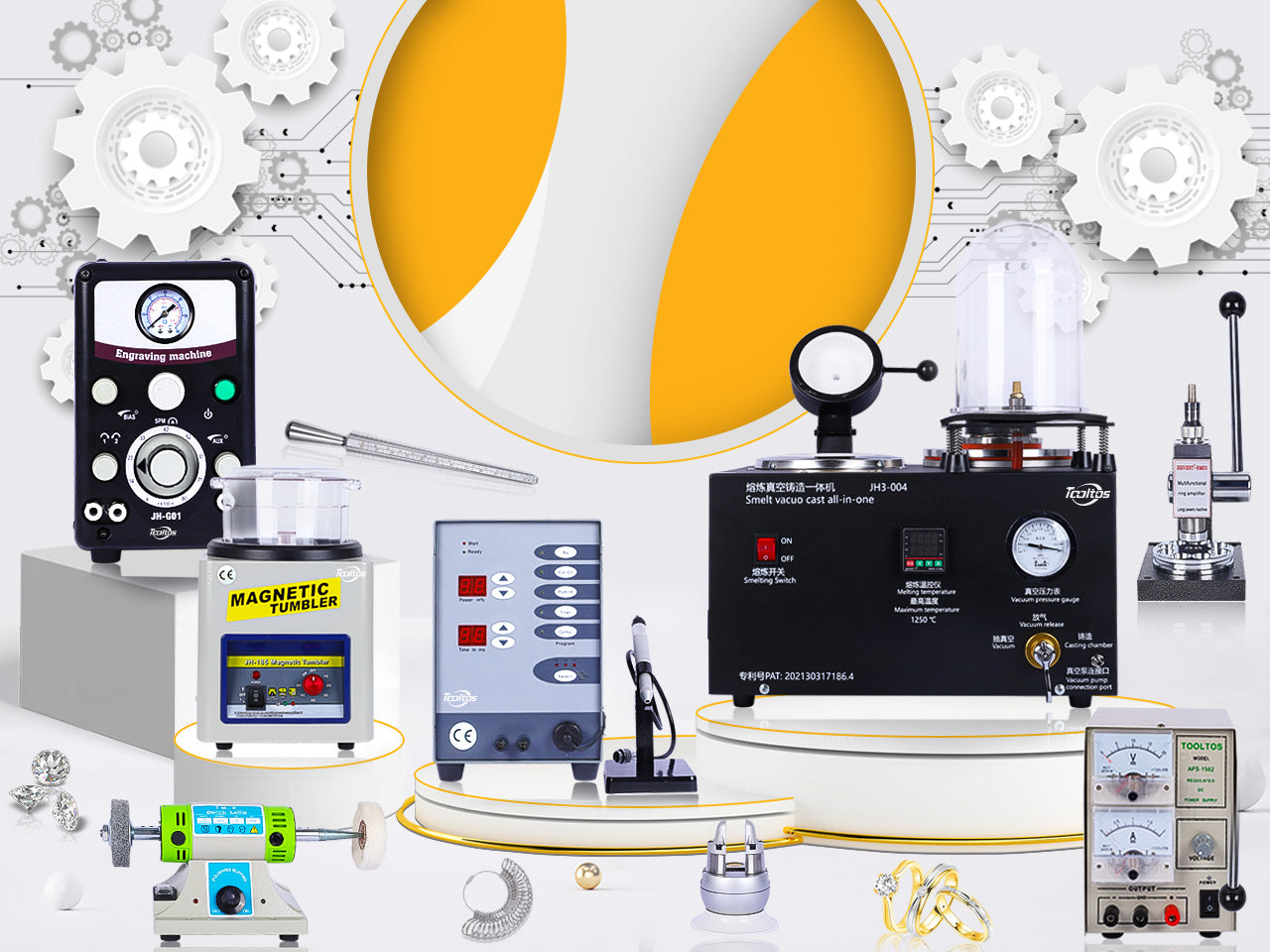Jewelry vulcanizers are specialized heat-and-pressure presses used to cure (vulcanize) layers of rubber into detailed, durable molds for lost-wax casting. By applying controlled temperature and pressure, vulcanizers transform raw rubber sheets—pre-mixed with sulfur or silicone compounds—into a single, cohesive mold that faithfully captures every surface detail of an original model. These molds are then used to inject molten wax, producing precise wax patterns for investment casting of metal jewelry.
How a Jewelry Vulcanizer Works
Jewelry vulcanizers function much like small hydraulic or mechanical hot presses (often called “hot platens”) designed specifically for mold making in jewelry workshops. Key principles include:
-
Vulcanization Process
-
Raw rubber (“green” rubber) is composed of loose polymer chains; adding sulfur and heat causes “cross-linking,” turning it into a strong, elastic network.
-
A vulcanizer’s heated platens press the rubber layers and model under pressure, curing the rubber into a solid block with the model’s negative impression.
-
-
Heat and Pressure Control
-
Typical vulcanizing temperatures range from 310°F to 350°F (154°C–177°C) for natural or silicone rubbers.
-
Pressure is applied via a handwheel or hydraulic system to ensure consistent molding and minimal shrinkage.
-
-
Mold Frame and Assembly
-
Layers of rubber sheets are cut to fit an aluminum or steel mold frame, sandwiching the jewelry model within.
-
The framed assembly is placed between the vulcanizer’s platens, and pressure is applied before heat is engaged.
-
Primary Uses in Jewelry Making
Jewelry vulcanizers are integral to the lost-wax casting workflow, enabling repeatable production of high-detail molds:
-
Rubber Mold Creation: Produce two-piece or multi-piece rubber molds that faithfully replicate complex jewelry forms, from rings and pendants to intricate filigree.
-
Wax Pattern Injection: After vulcanization, the mold cavity is injected with molten injection wax using a wax injector, creating wax positives for investment casting.
-
High-Volume Production: Vulcanized molds withstand hundreds to thousands of injection cycles, making them suitable for both small-batch and mass production.
Advantages of Vulcanized Rubber Molds
-
Durability and Longevity
-
Vulcanized molds resist tearing and wear, often lasting for thousands of wax injections—far exceeding the life of room-temperature vulcanizing (RTV) molds.
-
-
Detail Reproduction
-
High pressure ensures rubber flows into every crevice of the model, capturing undercuts and fine textures with minimal flash.
-
-
Thermal Stability
-
Suitable for wax injection temperatures and repeated heating cycles without deforming.
-
-
Cost-Effectiveness
-
Although initial investment in a vulcanizer is significant, the long mold life and rapid cycle times lower per-piece costs over large runs.
-
Comparison with Other Mold Materials
| Feature | Vulcanized Rubber | RTV Silicone | Natural Rubber Sheets (uncured) |
|---|---|---|---|
| Shrinkage | 2.6–3.6% | ~0–1.5% | 8–12% (uneven) |
| Tear Strength | 3000–3500 psi | 1000–1400 psi | ~100–200 psi |
| Mold Life | Hundreds–Thousands of cycles | Tens–Hundreds of cycles | Not applicable (must vulcanize) |
| Curing Method | Heat & pressure | Ambient (RTV) | Requires vulcanization |
Best Practices for Vulcanizer Use
-
Temperature Verification
-
Regularly check platen temperatures with a reliable thermometer; factory dials can be inaccurate.
-
-
Uniform Pressure
-
Ensure the mold frame sits flat between the platens to prevent uneven curing or warped molds.
-
-
Account for Shrinkage
-
Design models slightly oversized in the direction of platen pressure to compensate for rubber shrinkage.
-
-
Maintenance
-
Keep platens clean and free of rubber residue; inspect heating elements and thermostats periodically.
-
Conclusion
A jewelry vulcanizer is a hot-press machine that transforms raw rubber into durable, high-fidelity molds for wax injection and lost-wax casting. By mastering vulcanization—controlling heat, pressure, and mold assembly—jewelers can produce consistent, detailed wax patterns at scale, reducing costs and ensuring quality across production runs.


0 comments